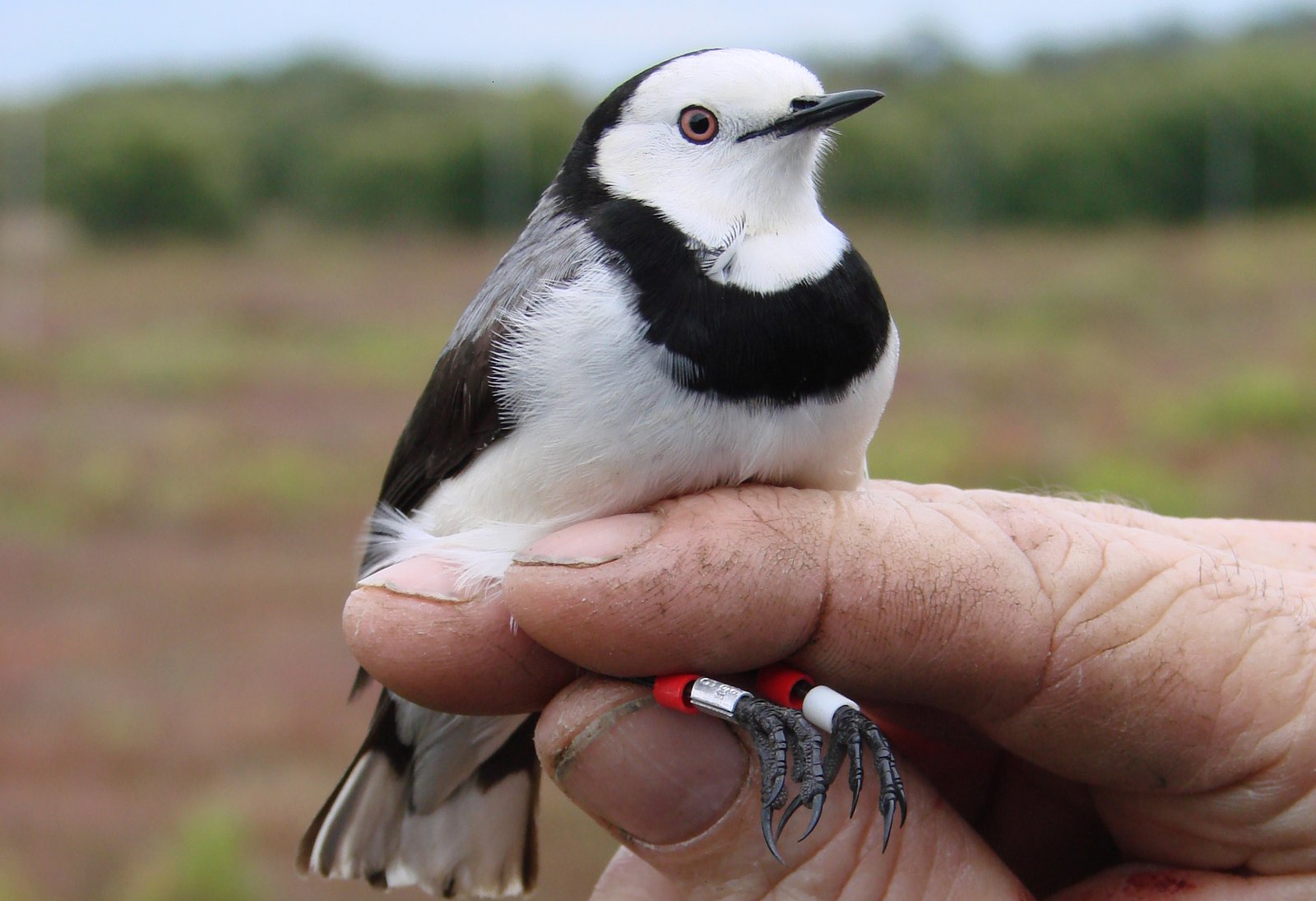Food for the birds – pop-up restaurants on the Kurnell Peninsula
The white-fronted chat (Epthianura albifrons) is a small, insectivorous bird that is threatened with extinction in the north-eastern part of its range, partially due to loss and degradation of its saltmarsh habitat. Chats feed in flocks that switch locations periodically, probably tracking habitat patches that are rich in food. Food availability could therefore be a limiting factor for the isolated populations that survive in saltmarsh refuges surrounded by urbanised land.
Vacuum sampling and identification of 17,711 ground-dwelling insects produced the rather unsatisfying conclusion that fluctuations in food abundance did not explain the movements of Endangered White-fronted Chats within the Towra Point Nature Reserve on the Kurnell Peninsular.

© Australian Museum
Rather, the study unexpectedly revealed that the birds sometime chose to fly 2 km to a weedy grassland to exploit temporary outbreaks of succulent aphids and insect larvae. This grassland area has now been converted to housing, highlighting the possibility that the loss of alternative foraging habitats may have contributed to population decline of this Endangered bird.
As part of a research program investigating the decline of this species, honours student Kurtis Lindsay tracked the distribution of their winter food supply. Working with Drew Allen (Macquarie University) and myself, Kurtis measured variation in the abundance of saltmarsh insects through time and space to find out whether patch-switching by foraging flocks can be explained by variation in food supply. Insects and spiders in the size range known to be eaten by white-fronted chats (1–7 mm) were vacuum-sampled from multiple patches over a four-month period. The location of foraging birds was recorded during the same period.
Although the different patches of saltmarsh looked similar, the relative amounts of food they provided varied from month to month. However, white-fronted chats did not forage consistently in saltmarsh patches with the highest overall food abundance.
During the course of the study, birds were discovered flying 2 km from the saltmarsh to a development site where they foraged in weedy grassland. Food samples collected from this site contained an extremely high abundance of juicy aphids (Hemiptera) and insect larvae (Neuroptera and Coleoptera). These observations support previous research indicating that the birds forage on temporary outbreaks of food that is easy to digest.
Our study indicates that food abundance does not explain bird movements within saltmarsh, but it highlights the potential importance of alternative foraging habitats beyond the boundaries of their saltmarsh reserve. Unfortunately, ongoing development of the Kurnell Peninsula has severely restricted dining opportunities outside Towra Point Nature Reserve. Surveys undertaken this month with Museum ornithologist Jaynia Sladek suggest that only 10 birds now remain in the Endangered population.
Dr Richard Major
Principal Research Scientist
More information:
Lindsay, K.J., Allen, A.P., Major, R.E., 2014. Can spatial and temporal food variability explain the winter foraging movements of a saltmarsh insectivore? Austral Ecology Early View.
Major, R.E., Johnson, R.N., King, A.G., Cooke, G.M., Sladek, J.L.T., 2014. Genetic isolation of endangered bird populations inhabiting saltmarsh remnants surrounded by intensive urbanisation. Animal Conservation
Ashcroft, M.B., Major, R.E., 2013. The importance of matrix permeability and quantity of core habitat for persistence of a threatened saltmarsh bird. Austral Ecology 38, 326-337.











